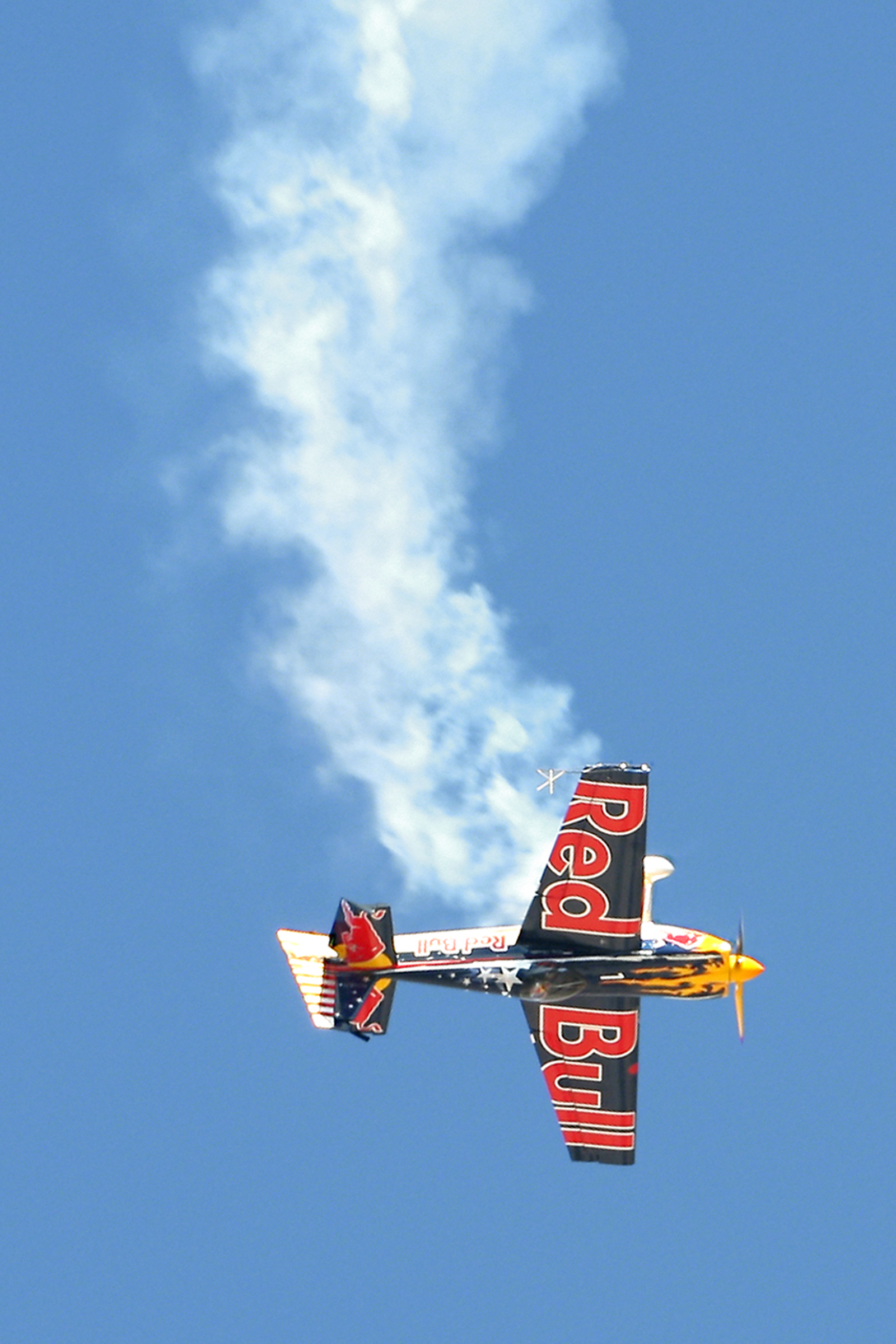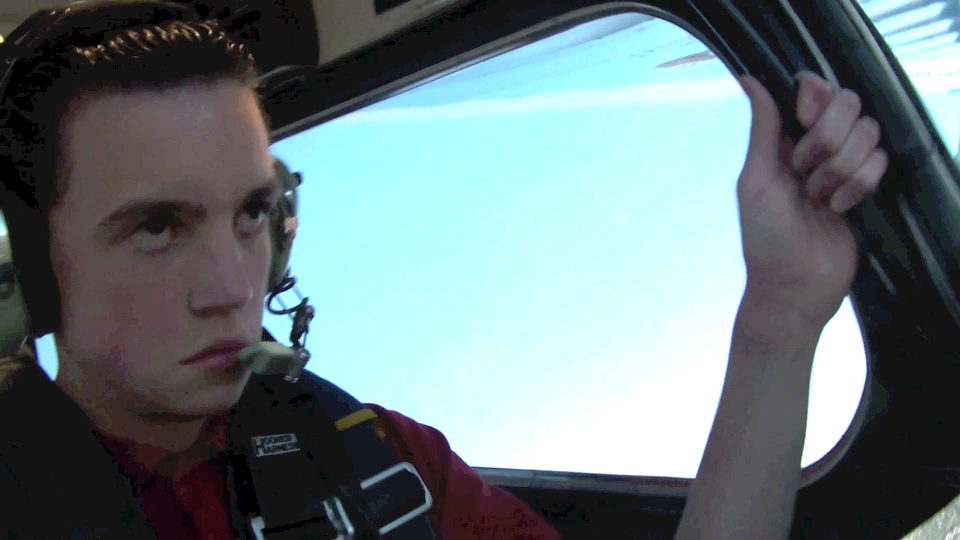Velocity, Acceleration, And Jerk
Velocity
Aerobatic pilots very much enjoy longitudinal velocity, commonly just referred to as "airspeed." It gives a safety margin in maneuvers, allows for longer sustained vertical lines, and impresses people on the ground. However, in aerobatic flying, an airplane's resultant velocity is not always in the same direction the nose is pointing; this is the foundation for maneuvers such as the lomcevak, knife-edge spin, tailslide, and torque roll.

This Zivko Edge 540 is falling straight down in an inverted flat spin, even though
its nose is on the horizon. Though the airplane has velocity, it is not very useful to the pilot.
(Photo: Victor Archer for Airport Journals: http://airportjournals.com/aviation-nation-from-heritage-to-the-horizons/)
In general, the only restriction on the maximum velocity of an aerobatic airplane is known as Vne, which is short for "Velocity to never exceed." Flight above this speed has the potential to permanently damage the airplane.
Acceleration
Though aerobatic pilots may occasionally be interested in acceleration as the derivative of their longitudinal velocity (that is, the rate of change of what is on the airspeed indicator), it is much more common to be concerned about the acceleration in the Z direction, which runs vertically through the cockpit.
Z axis acceleration is measured in terms of g, where 1g is the acceleration due to gravity. If the pilot were to roll inverted, the acceleration would be -1g. Since these accelerations are encountered every time the stick is pushed or pulled, the strength of an aerobatic airplane is measured in maximum Z acceleration, or g limits.

A 15-year-old me demonstrating the face stretching and paleness-inducing effects of +4.5g
(Photo by me)
Aerobatic airplanes have maximum g
loadings permissible for normal flight. In the case of the airplane I
practice aerobatics in (The Bellanca Super Decathlon), these limits are
positive 6 g and negative 5 g.
Jerk
Sadly, if you learn to fly aerobatics, you're going to meet some bad people; that's just the way it is in any hobby. If there are children around, we usually call these people "Jerks" to avoid choice words.
Of course, that is not quite the physics definition of Jerk. Jerk is
the third derivative of position, or the derivative of acceleration. It
measures the rate at which a body's acceleration changes. In
aerobatics, it is very common to go from one extreme to another very
quickly, such as in the inside
outside 8, where the acceleration can go from -3.5g to +4g in less than a second. Because of
these types of maneuvers, most aerobatic airplanes
are built to withstand unlimited
jerk.